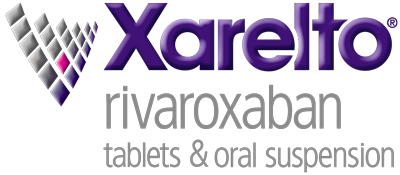When you’re living with AFib, it’s important to understand that you are 5 times more likely to have a stroke, and that the risk of a stroke significantly increases over time as you get older. The following tools will help you assess your stroke risk, and whether you may need therapy to help protect you.
How can you determine your stroke risk?
The CHA2DS2-VASc score is widely used by doctors to evaluate stroke risk in people with AFib and help guide treatment recommendations. This calculator uses the CHA2DS2-VASc risk factors to help you visualize your potential risk for AFib-related stroke by giving you a numbered score.
It may feel daunting, but knowing your score can help you make a plan with your doctor to help keep you protected. Using this tool may also help you understand how your stroke risk can change over time—people with low scores right now may need to reevaluate their scores periodically as they age or develop other health conditions. This tool does not replace the risk assessment you need to complete with your doctor.
The information you input in the stroke risk calculator will not be collected, stored, used, or transferred.
Choose the risk factors that apply to you
Congestive Heart Failure
I have been diagnosed with congestive heart failure
Hypertension
I have high blood pressure
Age
I am 75 years old or older
Diabetes
I have diabetes
Stroke
I have had a stroke or transient ischemic attack (TIA or “mini-stroke”) in the past
Vascular Disease
I have had a heart attack, or been diagnosed with peripheral artery disease (PAD), or atherosclerosis (plaque buildup in the arteries)
Age
I am 65 to 74 years old
Sex Category
I am female
My CHA2DS2-VASc score
Your score indicates that your potential risk level for having an AFib-related stroke is low.
You should always discuss your specific situation with your healthcare professional. Only they can tell you whether you should be taking a blood thinner to reduce your risk of AFib-related stroke.
Feel free to bring this with you to your next appointment to start a conversation about your stroke risk and what you can do to help reduce it.
Want to bring your score to your next doctor’s appointment?
Why stroke reduction is important
A stroke can be life threatening—but AFib-related stroke is also one of the worst types of strokes you can have because it can cause irreversible harm. Examples of the devastating and life-changing effects of stroke include:
- Disability or paralysis
- Memory loss
- Emotional or behavioral changes
- Speech or language difficulty
This is why it’s essential to reduce the risk of stroke. Your healthcare professional can help you understand whether it's time to start a blood thinner.
Stay connected with XARELTO®
Additional support, tools, and resources for anyone considering or
currently taking XARELTO®.
Additional support, tools, and resources for anyone considering or currently taking XARELTO®.
